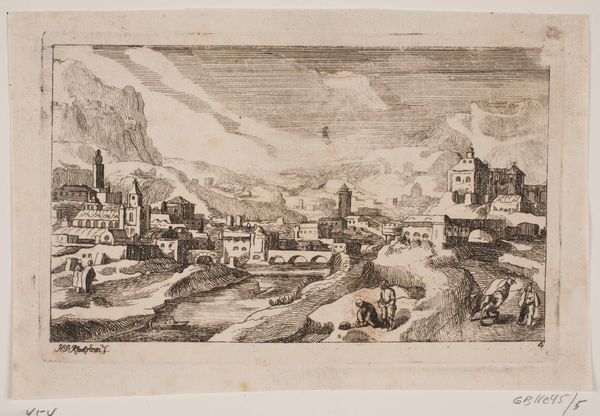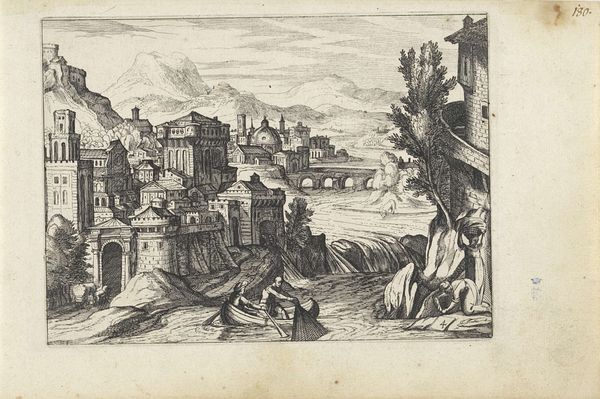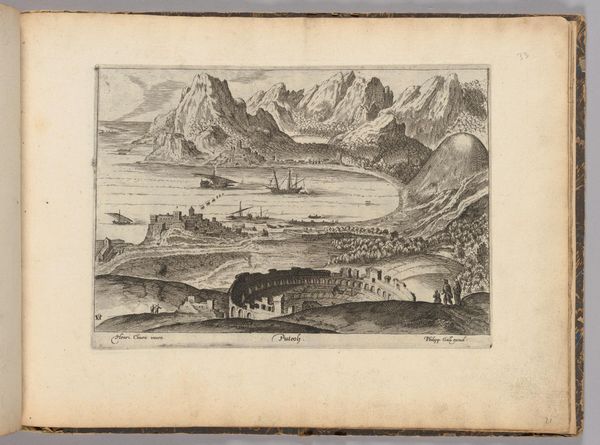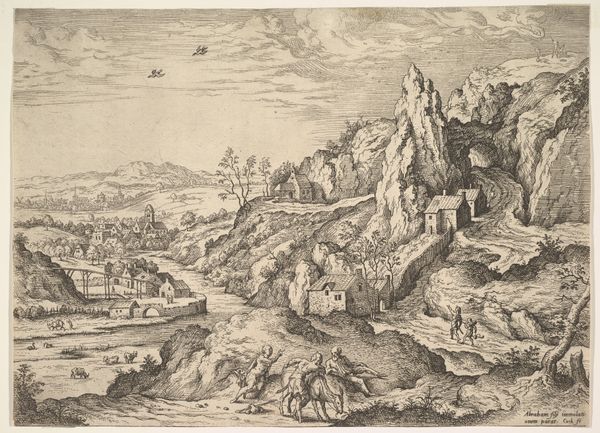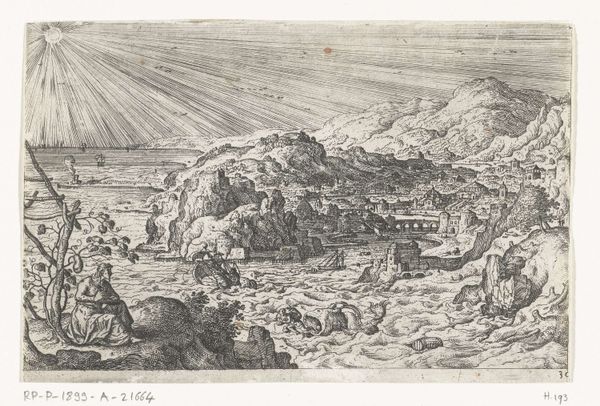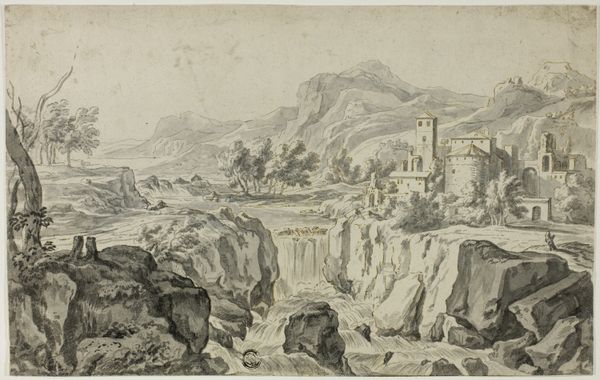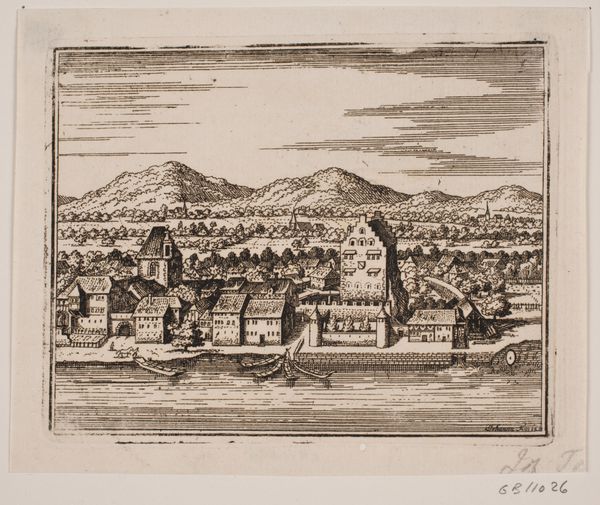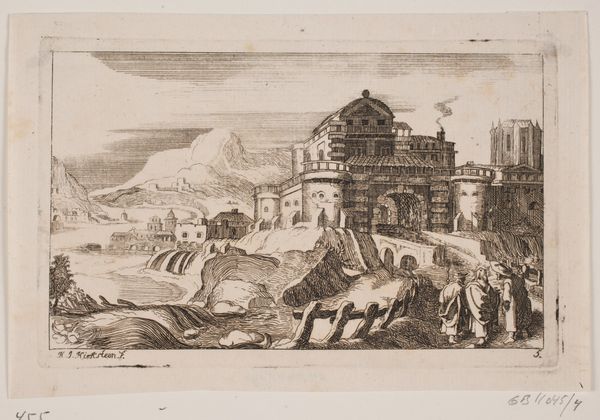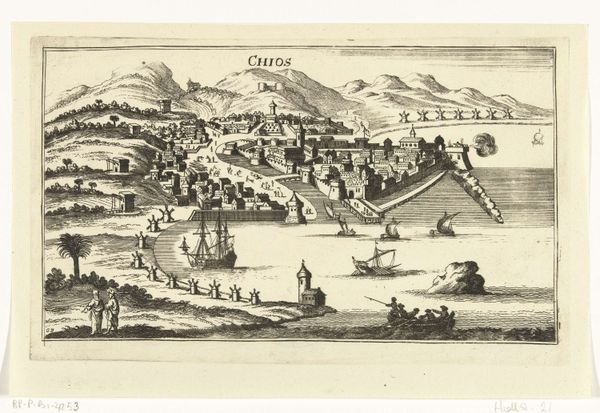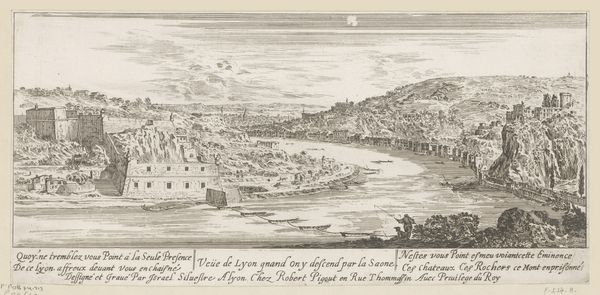
drawing, print, etching, ink, engraving
#
drawing
#
ink drawing
#
baroque
# print
#
pen sketch
#
etching
#
landscape
#
etching
#
ink
#
cityscape
#
engraving
Dimensions: 100 mm (height) x 157 mm (width) (plademaal)
Editor: This is "Kuperet kystlandskab med orientalske bygninger" by H. Rosenkilde, created in 1746. It's an etching, I think? The overall mood feels... nostalgic, almost like a memory. What catches your eye? Curator: The depiction of "orientalske bygninger," which translates to "hilly coastal landscape with oriental buildings," immediately suggests a layering of cultural projections. Rosenkilde, though Danish, evokes a scene from the 'Orient' – but what did that signify to an 18th-century European audience? Consider the symbolic weight of that word alone, saturated with European fantasies and imperial ambitions. Editor: So, the "Orient" isn't necessarily about geographical accuracy? Curator: Precisely. Notice how the artist juxtaposes classical architectural elements, maybe from his European visual library, with the generalized forms representing 'Eastern' structures. This imagined Orient reflects Europe's perception of itself, relying on constructed visual contrasts. How do the figures in the foreground contribute to this? Editor: They seem like observers, almost like stand-ins for the viewer. As if we are positioned within that same historical European gaze, admiring something…foreign. Curator: Yes, we are implicated in the artist's act of seeing and interpreting. This wasn't just a neutral recording of a place; it’s about constructing and mediating cultural ideas, turning geography into a canvas for imagination. Editor: I didn't think about it that way before – it's not just a pretty picture, but a window into how cultures perceive each other, and themselves. Curator: Exactly. Visual representation serves as a mirror and a prism, reflecting both the subject and the observer, all at once. The “Orient,” as portrayed, then speaks more profoundly of Europe's aspirations and limitations.
Comments
No comments
Be the first to comment and join the conversation on the ultimate creative platform.
